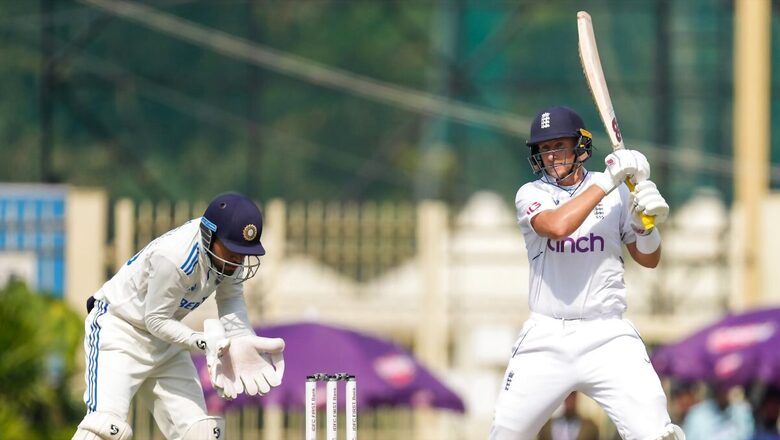
views
When Ben Stokes won the toss and elected to bat first, it looked like a no-brainer. The pitch was dry, Ranchi’s black soil made it look very ugly and plenty of cracks only planted seeds of doubts in the English camp. The doubts started the moment the visitors arrived at the JSCA Stadium for their first practice session and the “strange” look gave them the impression it would be a raging turner. Captain Ben Stokes went on to say that he had “never seen something like that before” and wasn’t sure of how it would behave.
The visitors were clearly expecting the pitch to break down, cracks to open up and the ball to turn square. At least on the opening day, that didn’t happen as except for the variable bounce, there weren’t any demons in the strip and both sides had their moments. It was indeed a dream start for India as debutant Akash Deep helped them make early inroads in what was a testing period to bat on. The pitch, however, didn’t play a major role in that and it was a very high-quality spell of fast bowling which put England on the mat.
At the post-day presser, Akash spoke at length about using the angles and making things happen as there wasn’t any early swing. When he stuck to his usual angle of delivering from close to the stumps, there wasn’t any seam movement either. It started going his and India’s way only when he changed the angle by going wide of the crease and extracted sharp movement into the right-handers. For Akash, the plan was simple and he didn’t deviate from it.
Except the Ben Stokes’ dismissal, where Ravindra Jadeja’s delivery fired into his pads kept really low, the wickets to fall in the morning session were largely because of some very good bowling. England could have preferred a tighter approach but that’s not how they play Test cricket, right?
One man who had played most of his Test cricket that way was Joe Root and he off-late received a lot of flak for his adventurous shot-selection. After multiple failures and the scoreboard reading 112/5, England’s No.4 stuck to the method which had brought him most of his success in the format. The visitors needed some stability at the stage and Root injected a lot of it. One ball at a time, he grew in confidence and the defence, footwork and shot selection got better as his innings progressed.
The change in approach during the Joe Root-Ben Foakes stand helped England play out one complete session without losing a wicket for the first time in the series. It wasn’t a usual sight to see England batters unable to find a boundary for more than 15 overs and operate at a strike-rate of under 50 but they did what the situation demanded. More importantly, they adapted. Something which England had failed to do in the series. With a solid approach, England enjoyed batting against the softer ball and frustrated the experienced duo of Ashwin and Jadeja.
It could have been a far worse day for India had Mohammed Siraj not bowled a quality spell with the old ball. Not just Siraj, it was Rohit’s proactive field-placements and the leg-side trap which helped them break what was looking a threatening 113-run stand. Foakes was back in the hut, next man in Tom Hartley didn’t last long but Root was still at it. With a gorgeous push wide of mid-off, the right-hander brought up a fantastic hundred and added some valuable runs with Ollie Robinson.
302/7 from 112/5. England couldn’t have asked for a better end and India wouldn’t be complaining too as they kept the visitors’ scoring rate in check. It was a good old-fashioned opening day of Test cricket which had had enough moments for both sides and sets up an exciting second day.




















Comments
0 comment